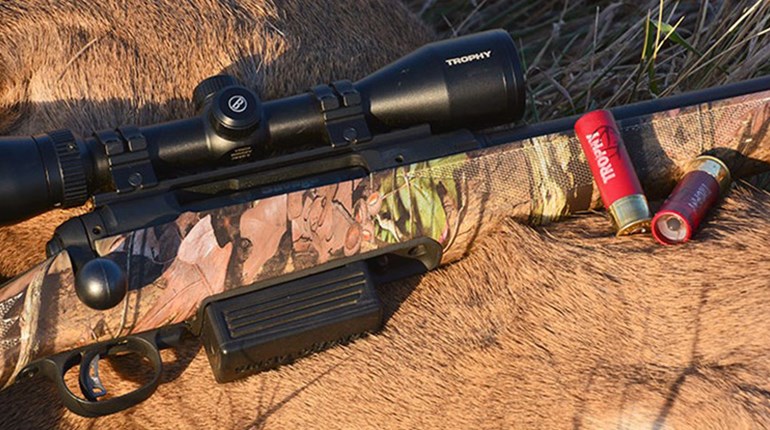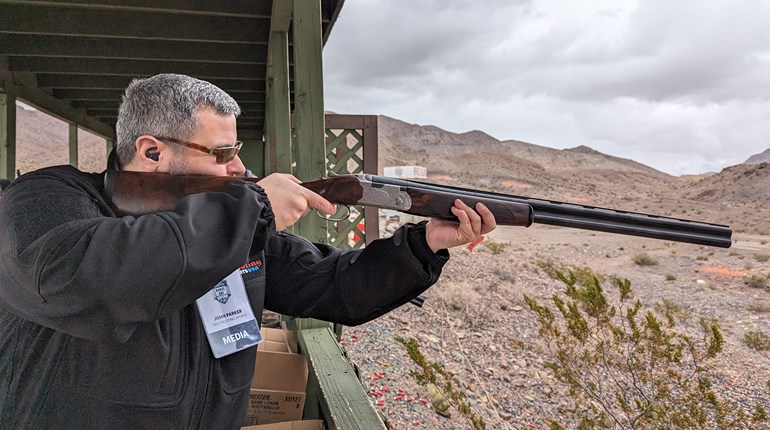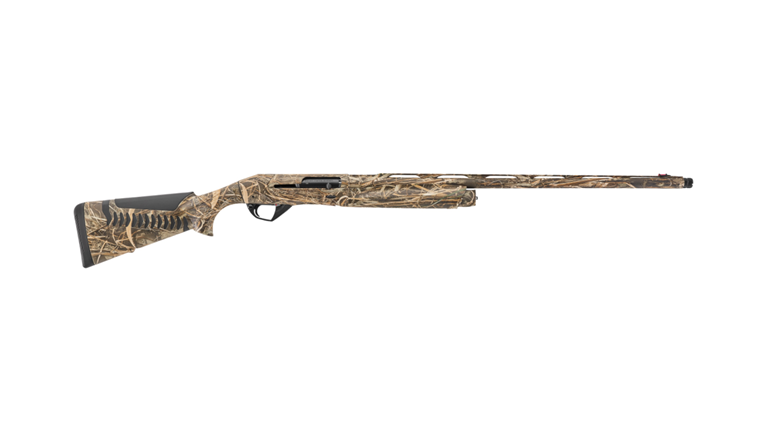Whenever a discussion arises over the "best" shotgun of a particular action type, the debate seems to center on a narrow group of brands. Whether the conversation occurs in a duck blind or online forum, it invariably proceeds thusly: What's the better pump-action, a Remington 870 or Mossberg 500? Should I buy a Browning Maxus semi-auto or Benelli Super Black Eagle II? And what's the best double-barrel clays gun: a Beretta DT-10, Perazzi MX8 or Krieghoff K80?
Often it's as if the other brands do not exist, which is a shame, because there are plenty of quality shotguns flying just a touch below the radar. Sometimes they're more affordable, sometimes not—but when I see one in a hunter's hands, I know he made a smart buying decision rather than yielding to populist hype.
Here are five underrated shotguns that warrant consideration before your next purchase.
Tristar Viper G2
Tristar Sporting Arms may not have the name recognition of Browning or Beretta, but its line of Turkish-made shotguns are quietly among the market's best value-buys. I've tested many Tristar shotguns and have yet to be disappointed.
In particular, the Viper G2 semi-automatic is arguably the best auto-loading shotgun available in its retail category. Prices range from just $519 for a synthetic stock with grippy "Soft Touch" coating to $639 for the G2 "Silver", which features nicely upgraded Turkish walnut and an anodized aluminum receiver.
Despite the sticker price, the G2 is smartly designed and built on a reliable action. Its dual action bars and bolt return spring lie forward of the receiver—allowing easy cleaning—and are fueled by a ported gas piston. All 12-gauges in the line are rated for light 1-ounce loads to 3-inch magnums without adjustment.
The field varieties of the G2 are slightly barrel light, but handle well given their sub-seven pound heft. Thanks to careful placement of the action bars, the forend is quite slender, fostering better handling in my opinion than shotguns with robustly carved forends.
Winchester Super X Pump
So often the pump-action debate simply pits Mossberg versus Remington. I'm not sure why that is—perhaps because the models 500 and 870 have been around so long and sold so well—but regardless, the Winchester Super X Pump deserves a seat at the table.
Its unique action may just be the smoothest I've tested. Most intriguingly, recoil initiates the cycling process through a design that Winchester calls its "intertia-assisted action." The heavier the shell, the more you'll notice the inertia-assist. With high-brass loads, I've found that the forend cycles rearward as if under its own volition—all I had to do was return it forward to chamber the next round.
The SXP simply must be shot to be fully appreciated, and therein lies part of the problem: Off-the-rack, cycled without shells, the action feels a tad stiff, clunky even compared to the always-smooth Mossberg or Remington. I can see why a consumer with no prior knowledge of the SXP may cycle the action a few times and return it to the clerk.
Don't make that mistake: Under recoil the SXP runs like a gem.
Blaser F3
So, you've saved up a few grand for that dream competition over/under. Before you rush out and buy from one of the major household names, might I suggest the Blaser F3?
"Blaser," you say, "Isn't that a rifle maker?" Well, yes, but since 2004 the German company's excellent F3 shotgun has also been available for import to the United States. Perhaps its relatively new emergence here is why it so often takes a backseat to more venerable brands. However, I consider its low-profile, monoblock receiver; ultra-crisp mechanical trigger; handling; fit and finish; and lovely yet modest styling to rival any mid-priced competition shotgun.
Possibly the most innovative aspect of the F3—and this is a highly innovative shotgun—is its modularity. Unlike most manufacturers, Blaser makes just one size F3 receiver, which accepts all barrels from 12-gauge to .410. So, if you buy a 12-gauge F3 and one day decide you want a 28-gauge, all you'd have to do is buy the barrels.
Many varieties of the F3 are also equipped with stock and barrel balancers. Whether you like a forward- or rear-ward heavy shotgun—or just one with overall heft—the F3 can be tailored to your preference. This feature is not unheard of, but rare at the Standard F3's price point of $7,000.
I could list further refinements—the unique, horizontal hammers, the ease with which the gun opens thanks to a patented ejector system, and more—but I'm sure my editor wants me to move on.
Weatherby SA-08
If someone were to say the name "Weatherby," I suspect the first image to pop into your head would be a rifle or rifle cartridge. However, Weatherby's small-but-mighty line of value-priced shotguns, which includes the impressive SA-08, is a winner as well.A variety of finishes and youth models are available, ranging in price from a $599 synthetic 12-gauge to the newest model in the lineup, a very well received $849 28-gauge.
Introduced in 2008, the SA-08's dual-valve gas system has demonstrated excellent reliability in cycling 12-gauge shells from ultra-light 7/8-ounce target loads to 3-inch magnums. Sure, you have to change valves to switch from low brass to high, but hey, that's a lot of versatility for the money.
Other value-packed features include an innovative drop-out trigger system for cleaning; a slick, rust-inhibiting, chrome-plated bolt; a carrier-control button and more. The SA-08 also weighs just 6 ½ pounds, a perfect choice for all-day upland carry.
As far as aesthetics go, well, I just love the lines on this gun. From rib to receiver to stock, the SA-08 simply flows the way a shotgun ought to, and the wood varieties feature surprisingly nice walnut.
As a final touch, the SA-08 features a slightly muzzle-heavy balance point. Ideal balance points are subjective in nature, but in my judgment the design affords the Weatherby a lively feel.
Stevens 320
The now-discontinued Winchester Model 1300 was arguably the slickest, most underrated pump-action of its day. Its patents have since expired, which Stevens was more than happy to capitalize on with its Model 320.
From its four-lug rotating bolt head to the safety's positioning forward of the trigger guard and even the gun's aesthetics, the 320 is essentially a replica of the 1300. However, cost-saving measures were employed to keep the field-grade 320's sticker price strikingly low. Departures from the 1300 include a low-cost synthetic stock, a rather Spartan recoil pad and Chinese manufacture.
However, like the Winchester of old, the 320 features surprisingly good fit and finish, a proven action design, sturdy lockup, and quality internal parts. Is it the smoothest-cycling pump on the market? No, but I challenge you to find a stronger, better-built shotgun—or a more underrated one—for $240.









































